Capacitor-Less Low-Power Neuron Circuit with Multi-Gate Feedback Field Effect Transistor
Abstract
1. Introduction
2. FBFET
2.1. FBFET Simulation Results and Characterisitcs
- Put in positive voltage to the control gate, and a potential well is created under the control gate to accumulate electrons.
- Applying a positive bias to gate 1 lowers the potential barrier. Additionally, source electrons cross the potential barrier and accumulated in the potential well under the control gate.
- The accumulated electrons lower the barrier height of the valence band on the drain, and then holes are accumulated in the p-body below the gate 1.
- Likewise, the accumulated holes drop the potential barrier on the source, and the potential barriers become very low. Therefore, the current increases rapidly, and the FBFET turns on steeply.
2.2. Multi-Gate FBFET for Multiple Inputs
3. Capacitor-Less Multiple Input Neuron Circuit
4. Conclusions
Author Contributions
Funding
Institutional Review Board Statement
Informed Consent Statement
Data Availability Statement
Conflicts of Interest
References
- Sourikopoulos, I.; Hedayat, S.; Loyez, C.; Danneville, F.; Hoel, V.; Mercier, E.; Cappy, A. A 4-fJ/spike artificial neuron in 65 nm CMOS technology. Front. Neurosci. 2017, 11, 123. [Google Scholar] [CrossRef]
- Oliveira, J.F.; Araque, A. Astrocyte regulation of neural circuit activity and network states. Glia 2022, 70, 1455–1466. [Google Scholar] [CrossRef]
- Zhang, T.; Perkins, M.H.; Chang, H.; Han, W.; de Araujo, I.E. An inter-organ neural circuit for appetite suppression. Cell 2022, 185, 2478–2494. [Google Scholar] [CrossRef] [PubMed]
- Kwon, D.; Woo, S.Y.; Lee, J.H. Review of Analog Neuron Devices for Hardware-based Spiking Neural Networks. J. Semicond. Technol. Sci. 2022, 22, 115–131. [Google Scholar] [CrossRef]
- Rathi, N.; Agrawal, A.; Lee, C.; Kosta, A.K.; Roy, K. Exploring spike-based learning for neuromorphic computing: Prospects and perspectives. In 2021 Design, Automation & Test in Europe Conference & Exhibition (DATE); IEEE: Piscataway, NJ, USA, 2021. [Google Scholar]
- Saxena, V. Neuromorphic computing: From devices to integrated circuits. J. Vac. Sci. Technol. B Nanotechnol. Microelectron. Mater. Process. Meas. Phenom. 2021, 39, 010801. [Google Scholar] [CrossRef]
- Huynh, P.K.; Varshika, M.L.; Paul, A.; Isik, M.; Balaji, A.; Das, A. Implementing spiking neural networks on neuromorphic architectures: A review. arXiv 2020, arXiv:2202.08897. [Google Scholar]
- Yamazaki, K.; Vo-Ho, V.K.; Bulsara, D.; Le, N. Spiking neural networks and their applications: A Review. Brain Sci. 2022, 12, 863. [Google Scholar] [CrossRef]
- Dora, S.; Kasabov, N. Spiking neural networks for computational intelligence: An overview. Big Data Cogn. Comput. 2021, 5, 67. [Google Scholar] [CrossRef]
- Poon, C.-S.; Zhou, K. Neuromorphic silicon neurons and large-scale neural networks: Challenges and opportunities. Front. Neurosci. 2011, 5, 108. [Google Scholar] [CrossRef] [PubMed]
- Indiveri, G.; Chicca, E.; Douglas, R. A VLSI array of low-power spiking neurons and bistable synapses with spike-timing dependent plasticity. IEEE Trans. Neural Netw. 2006, 17, 211–221. [Google Scholar] [CrossRef] [PubMed]
- Park, Y.S.; Woo, S.; Lim, D.; Cho, K.; Kim, S. Integrate-and-fire neuron circuit without external bias voltages. Front. Neurosci. 2021, 15, 644604. [Google Scholar] [CrossRef] [PubMed]
- Sung, J.; Shin, C. Understanding of carriers’ kinetic energy in steep-slope P+ N+ P+ N+ feedback field effect transistor. Semicond. Sci. Technol. 2022, 37, 105014. [Google Scholar] [CrossRef]
- Kwon, M.W.; Baek, M.H.; Hwang, S.; Park, K.; Jang, T.; Kim, T.; Lee, J.; Cho, S.; Park, B.G. Integrate-and-fire neuron circuit using positive feedback field effect transistor for low power operation. J. Appl. Phys. 2018, 124, 152107. [Google Scholar] [CrossRef]
- Oh, J.H.; Yu, Y.S. Macro-Modeling for N-Type Feedback Field-Effect Transistor for Circuit Simulation. Micromachines 2021, 12, 1174. [Google Scholar] [CrossRef] [PubMed]
- Kim, M.; Lee, K.; Kim, S. A review of feedback field-effect transistors: Operation mechanism and their applications. J. IKEEE 2018, 22, 499–505. [Google Scholar]
- Lee, C.; Shin, C. Study on Various Device Structures for Steep-Switching Silicon-on-Insulator Feedback Field-Effect Transistors. IEEE Trans. Electron Devices 2020, 67, 1852–1858. [Google Scholar] [CrossRef]
- Kim, M.; Kim, Y.; Lim, D.; Woo, S.; Cho, K.; Kim, S. Steep switching characteristics of single-gated feedback field-effect transistors. Nanotechnology 2017, 28, 055205. [Google Scholar] [CrossRef]
- Lee, I.; Park, H.; Nguyen, Q.T.; Kim, G.; Cho, S.; Cho, I. Optimization of Feedback FET with Asymmetric Source Drain Doping profile. Micromachines 2022, 13, 508. [Google Scholar] [CrossRef] [PubMed]
- Lee, C.; Sung, J.; Shin, C. Understanding of feedback field-effect transistor and its applications. Appl. Sci. 2020, 10, 3070. [Google Scholar] [CrossRef]
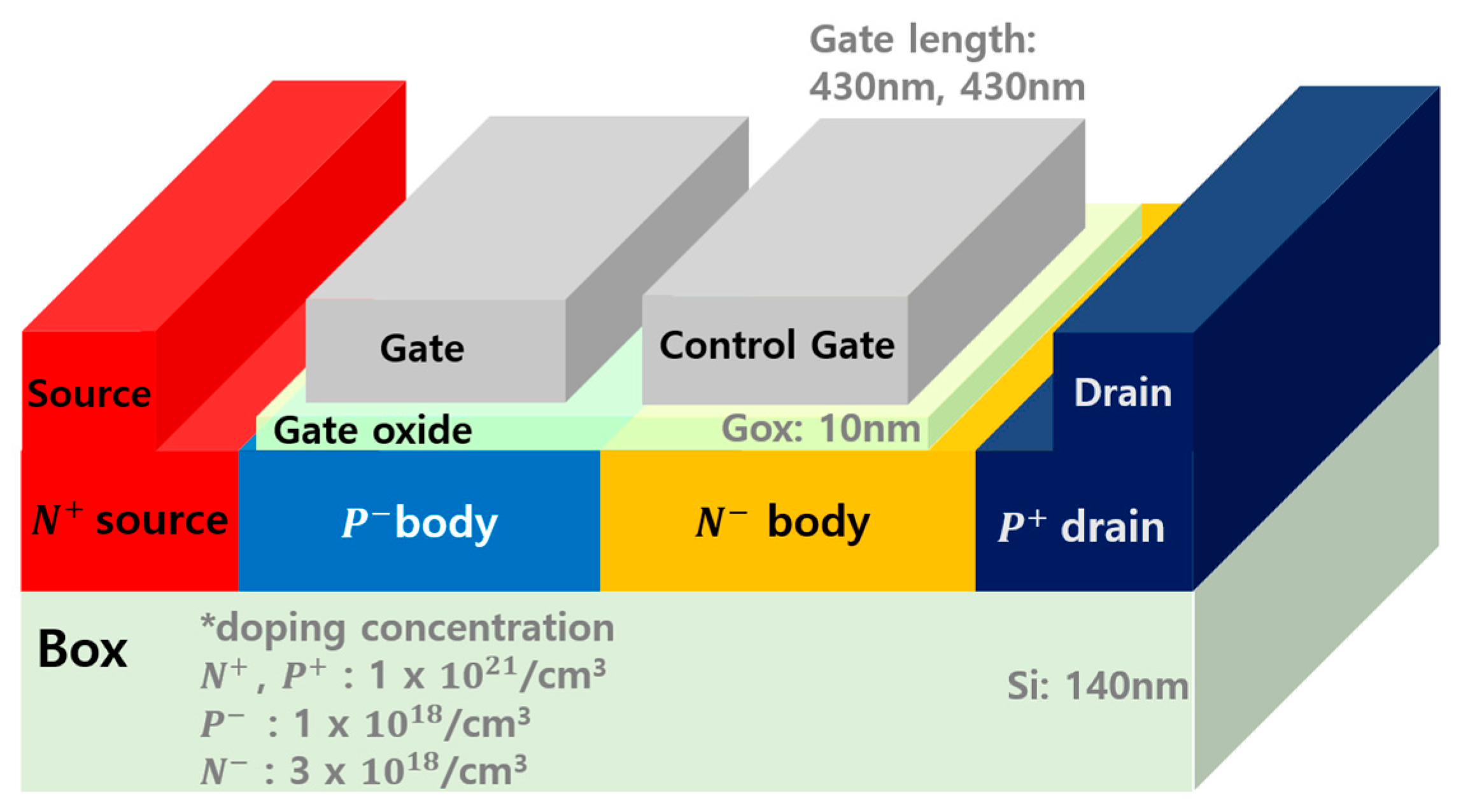
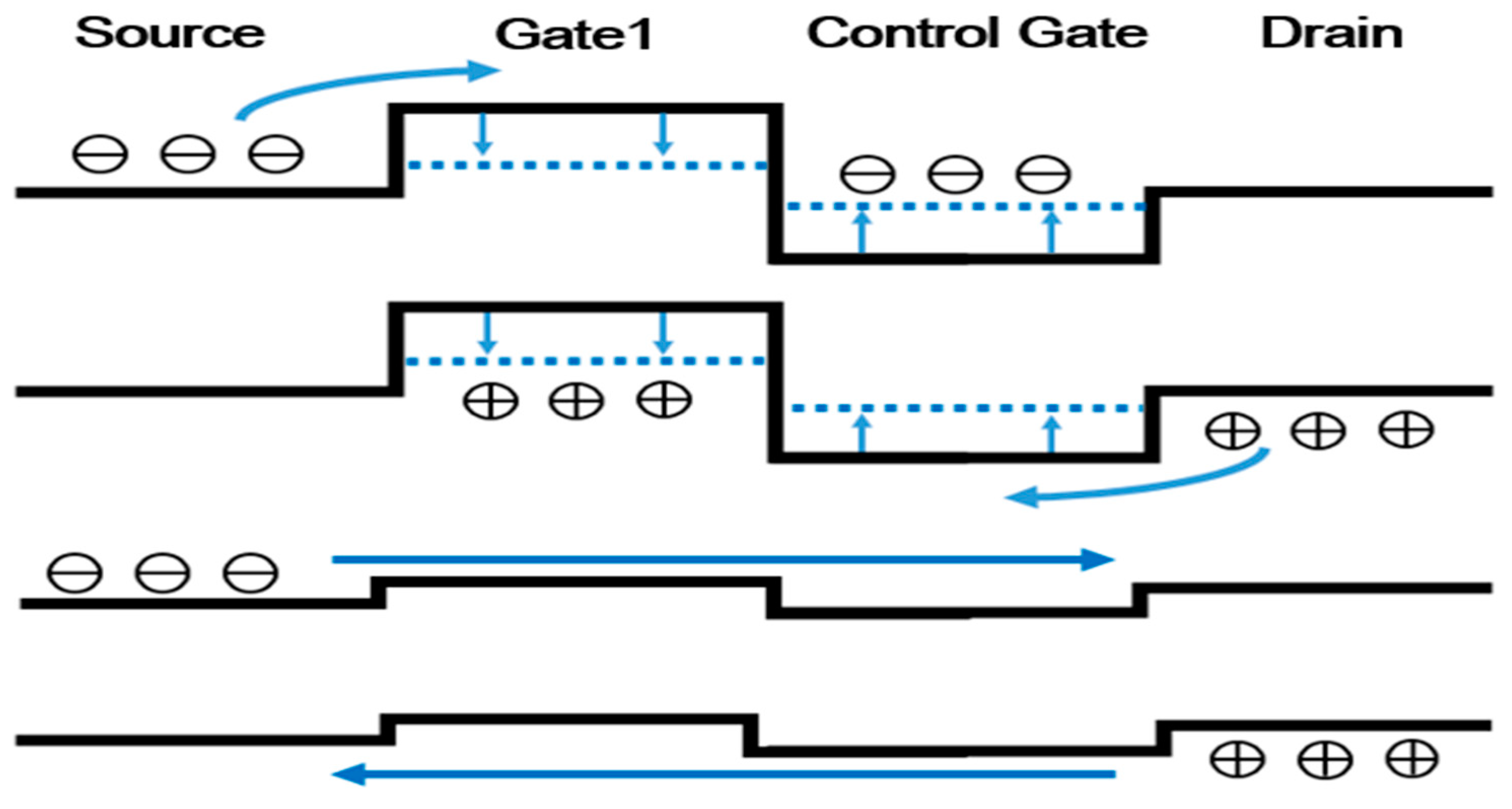

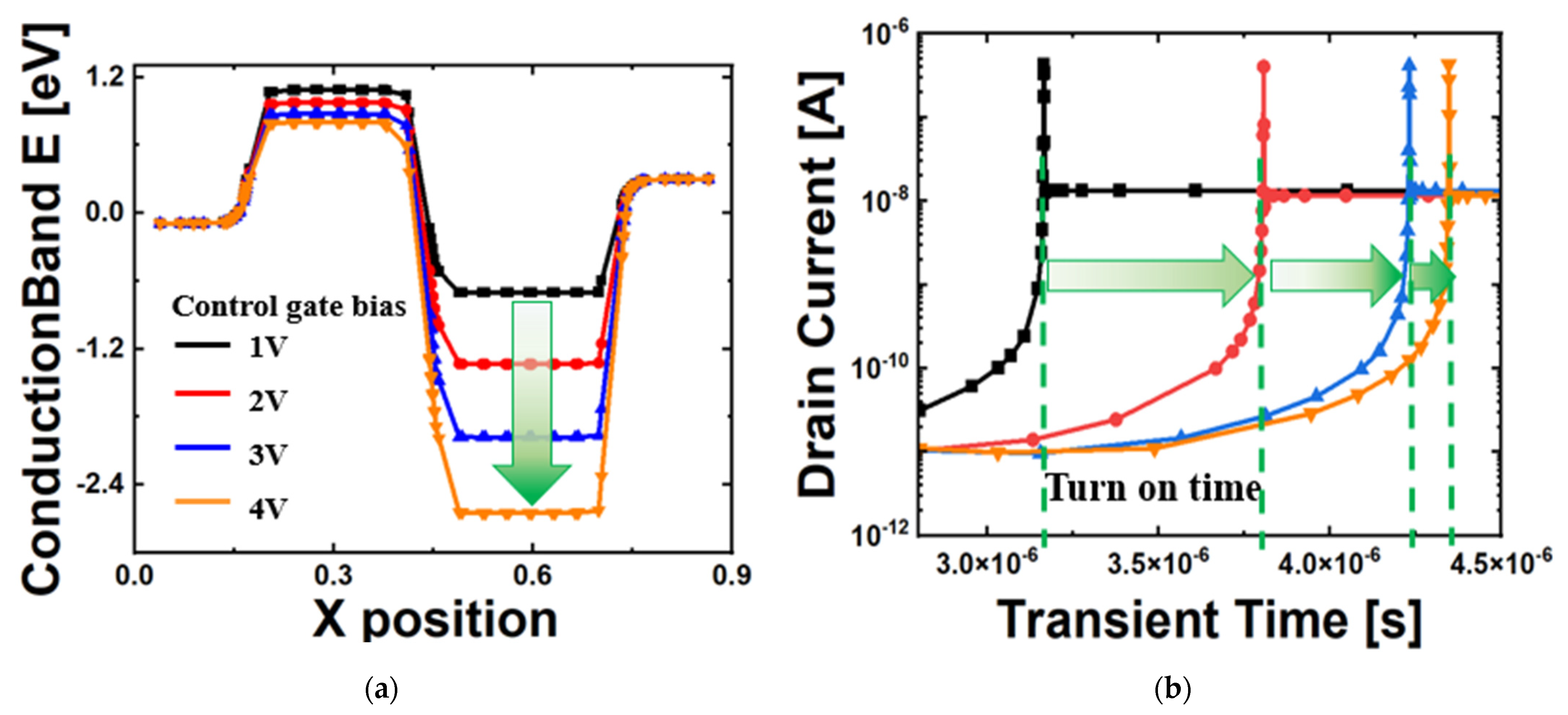
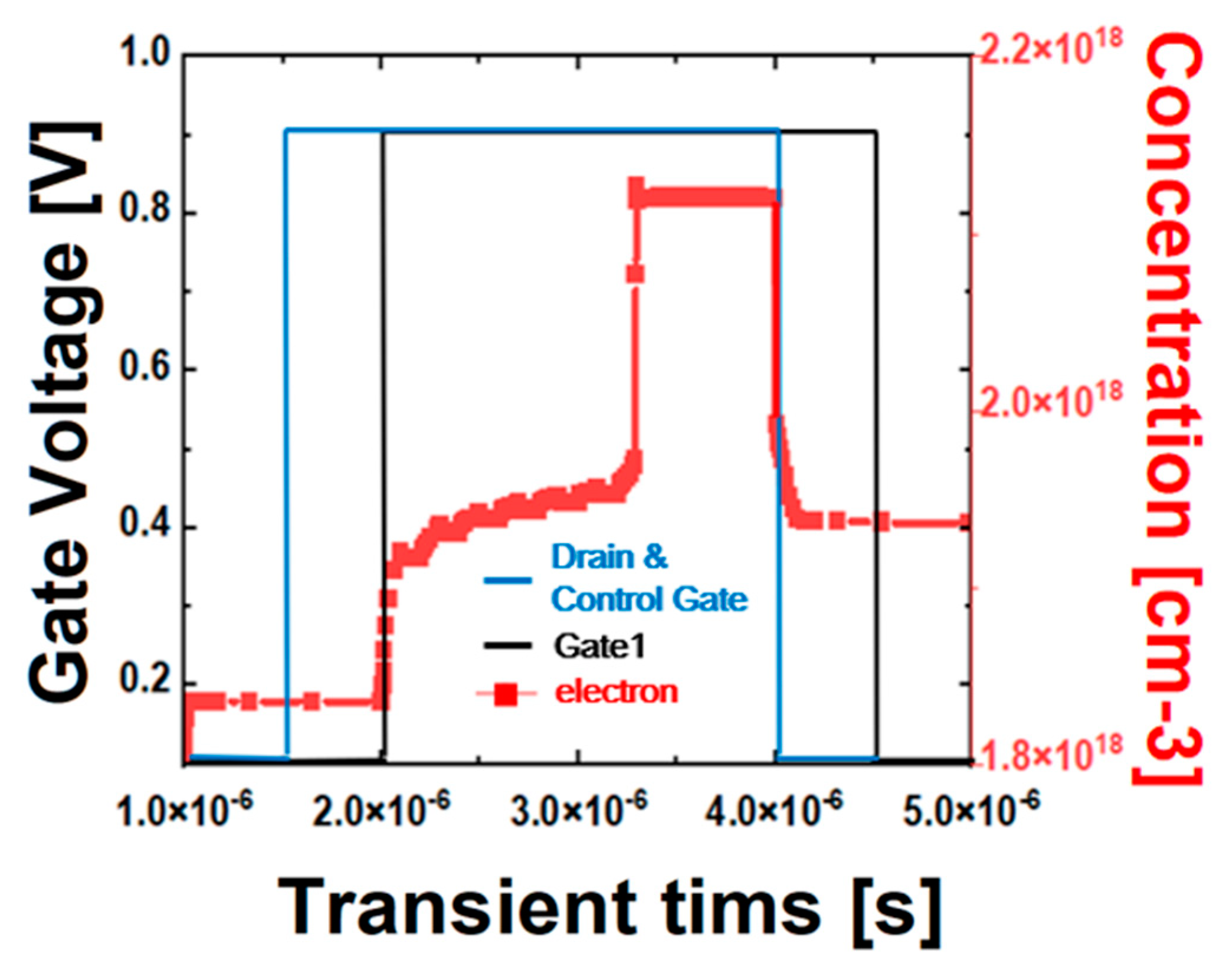
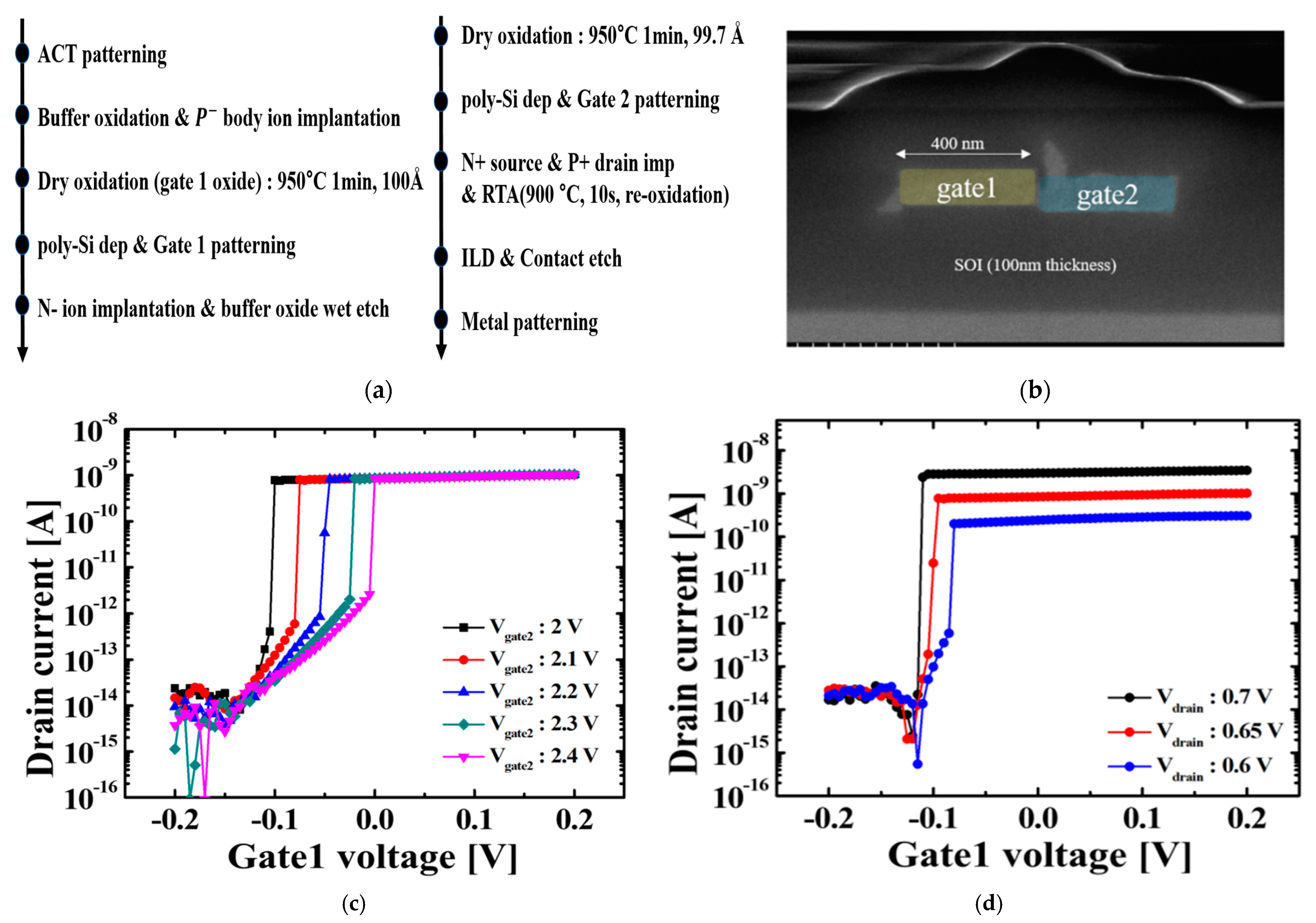

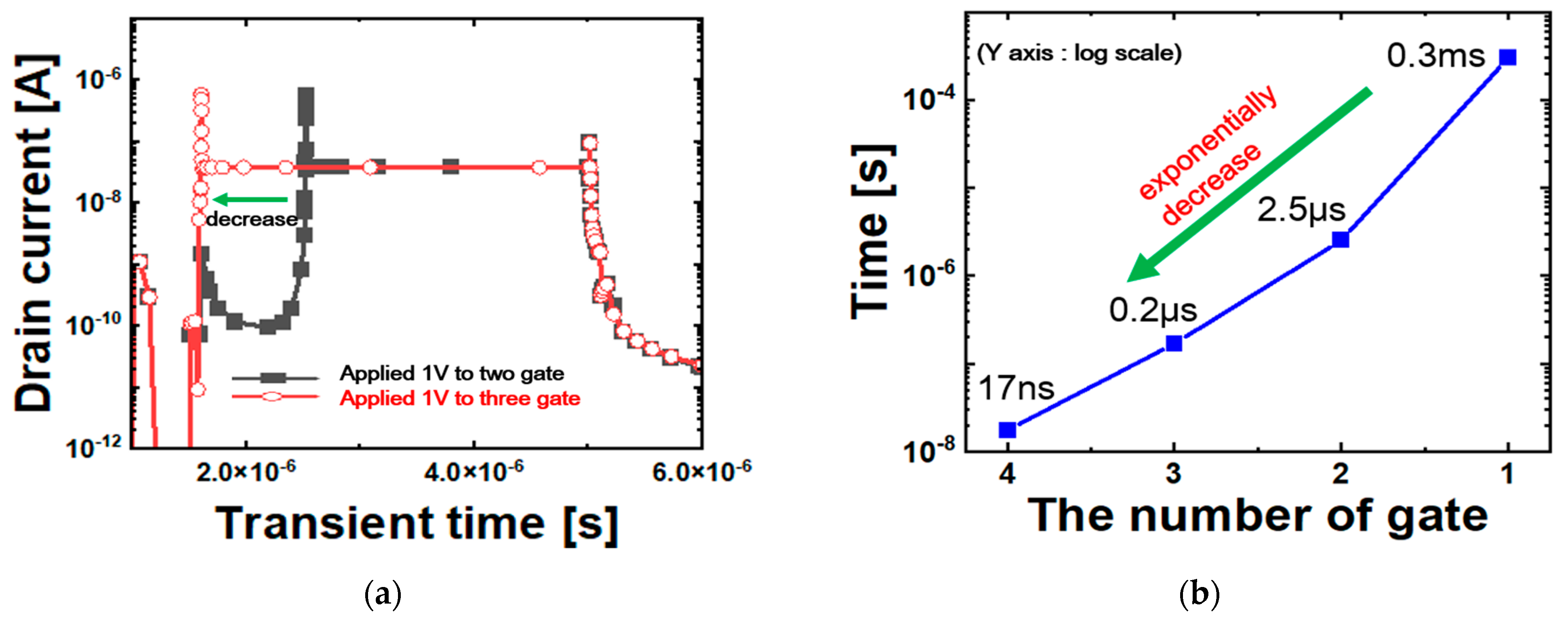
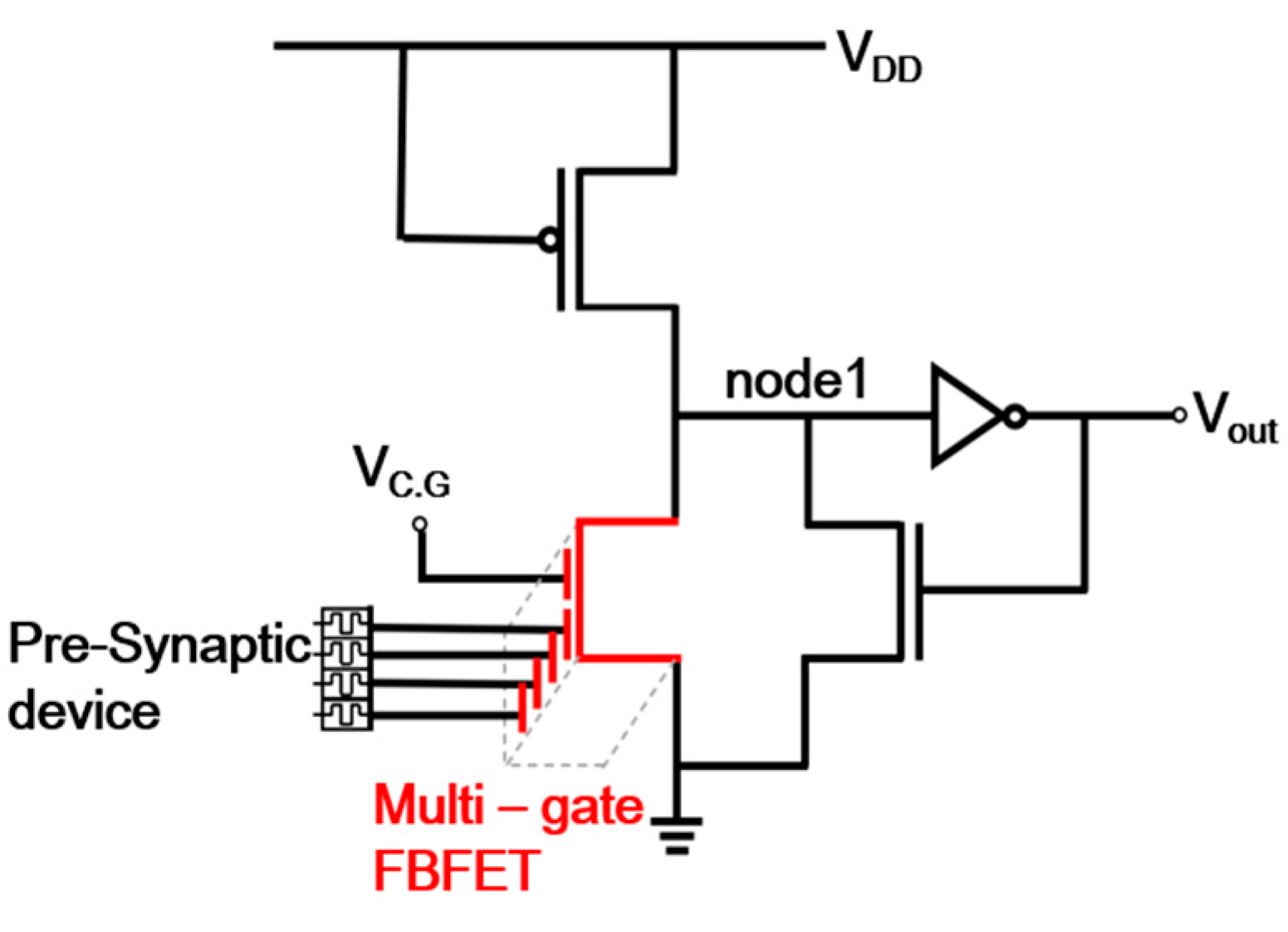

Disclaimer/Publisher’s Note: The statements, opinions and data contained in all publications are solely those of the individual author(s) and contributor(s) and not of MDPI and/or the editor(s). MDPI and/or the editor(s) disclaim responsibility for any injury to people or property resulting from any ideas, methods, instructions or products referred to in the content. |
© 2023 by the authors. Licensee MDPI, Basel, Switzerland. This article is an open access article distributed under the terms and conditions of the Creative Commons Attribution (CC BY) license (https://creativecommons.org/licenses/by/4.0/).
Share and Cite
Lee, J.; Cha, M.; Kwon, M.-W. Capacitor-Less Low-Power Neuron Circuit with Multi-Gate Feedback Field Effect Transistor. Appl. Sci. 2023, 13, 2628. https://doi.org/10.3390/app13042628
Lee J, Cha M, Kwon M-W. Capacitor-Less Low-Power Neuron Circuit with Multi-Gate Feedback Field Effect Transistor. Applied Sciences. 2023; 13(4):2628. https://doi.org/10.3390/app13042628
Chicago/Turabian StyleLee, Junhyeong, Misun Cha, and Min-Woo Kwon. 2023. "Capacitor-Less Low-Power Neuron Circuit with Multi-Gate Feedback Field Effect Transistor" Applied Sciences 13, no. 4: 2628. https://doi.org/10.3390/app13042628
APA StyleLee, J., Cha, M., & Kwon, M.-W. (2023). Capacitor-Less Low-Power Neuron Circuit with Multi-Gate Feedback Field Effect Transistor. Applied Sciences, 13(4), 2628. https://doi.org/10.3390/app13042628






